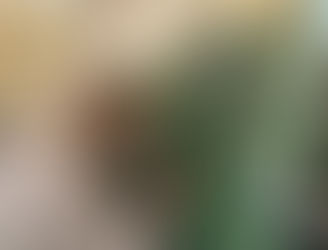Part 2: THE CREATIVE PRACTICE
- Mahurangi Artist Network
- Aug 17, 2022
- 4 min read
Questions of Restrictions, Blockages & Creative Practice
This month we continue the discussion from some Mahurangi Artists regarding the challenges faced in their creative practice. Last month we discussed the challenge of 'finding space to create' and how organising their space and their time helped overcome these challenges. This month we discuss how they manage disturbance to their creative flow and how they avoid creative blocks.

Karena de Pont often negotiates with family to commandeer the table tennis table amongst the gym equipment to use for her larger projects that her small studio can't accommodate.
Managing disturbance Possibly one of the most frustrating things about having a studio space where others can freely enter is disturbance through interruptions. If your studio is open to the public, you might need to consider how to have enough time for developmental work or time to be ‘in the flow’ without interruptions and learn what parts of your work you can do in the public gaze and which to keep for private times. If your studio is at home where family might be around or are also home based for work, consider developing a pattern such as during the ‘working day’ avoiding entering the other’s workspace. Alysn’s partner and her make their own drinks, eat when they choose to and if they need to contact the other, they text so that the other can answer when convenient. If they happen to meet away from our workspaces, that’s fine – but minimising interruptions respects our individual work requirements. This system is always a work in progress, and Alysn has certainly threatened to lock herself into the studio at times when he starts to forget and walks in to ask about the shopping list! Avoiding Creative Blocks Creative blocks are complicated as the blocks, or the resistance may have many causes. Often it is discussed as a primarily psychological issue, but financial, time, health issues and pretty much everything else can come into it which means that each of us will find unique ways to work through them. On a regular basis Alysn Mideglow-Marsden aims to avoid the development of creative blocks by ‘thinking’ whilst out exercising, then noting down as much as possible. Doing this gives her lots of ideas to try when she gets back to the studio. It is sometimes called ‘active mediation’ – allowing the mind to wander through its processes whilst doing something engaging enough to turn off part of the analytical and pushy part of the mind but not so engaging that all of my attention has to be given to it. Having these notes and other jottings and sketches around which she can work though in the studio keeps her in touch with ideas to test out, and whilst trying out one, she find that others will often evolve, and the process continues, “I give myself permission to work for long hours on something which may not ever become a finished ‘result’ but which I allow to lead me through to places which will”. Yvonne Gray agrees, “I also think down time is a good thing as when you relax, your brain is often working on the current work or next idea. I believe it’s important to give yourself permission to do art as often as possible (we are artists after all) or even lie down for a while and let your mind wander – often great ideas are generated in this way”. Many of the Network artists say that have too many ideas and not enough time to develop them rather than experiencing any ‘artist’s block’. That is the conundrum of the creative practice, the constant evolution of ideas. Ursula Christel says she “suffers from too many ideas for cool ‘bigger-picture’ community projects, and not enough time to make them all happen” and Peter Mansfield’s agrees “Because I’m a newbie to this art creation world, I have an abundance of ideas. I find that once I focus on starting a project, I can become lost in the process of producing the thought into reality. I’m never sure how it will turn out but aspire to making each new project better than the previous one. Philippa Stichbury also agrees, “I often have just too many projects in my head – what to start first! So, then I start nothing or fluff around cleaning up in the workspace. I’m trying hard to have things on the go that I can pop in and out of to do and that is starting to work for me. I am also hoping that when I have a bigger dedicated space, I will be more productive. I don’t at this stage suffer from artist’s block, only artist’s in-activity!!”

“The advice I like to give young artists, or really anybody who’ll listen to me, is not to wait around for inspiration. Inspiration is for amateurs; the rest of us just show up and get to work. If you wait around for the clouds to part and a bolt of lightning to strike you in the brain, you are not going to make an awful lot of work. All the best ideas come out of the process; they come out of the work itself. Things occur to you. If you’re sitting around trying to dream up a great art idea, you can sit there a long time before anything happens. But if you just get to work, something will occur to you and something else will occur to you and something else that you reject will push you in another direction. Inspiration is absolutely unnecessary and somehow deceptive. You feel like you need this great idea before you can get down to work, and I find that’s almost never the case.” Chuck Close


































































































Comments